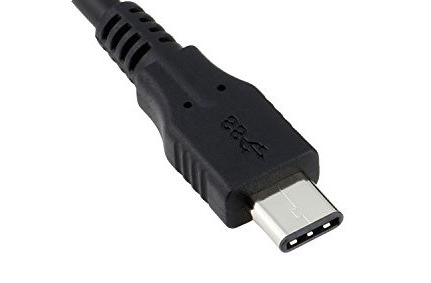USB-C interface
USB-C is a 24- pin interface for transferring data and power. The USB- C connector has 12 contacts each on the upper and lower side. Unlike the other USB pl ugs, the USB-C plug can be used on both sides and is designed for considerably more mating cycles than the known versions, namely for 10,000.
The USB-C connector can replace the familiar USB-A and USB-B connectors. It has dimensions of 8.4 mm x 2.6 mm and is only slightly larger than the micro USB plug. This allows the USB-C connector to be used in smartphones and other mobile devices, desktops and low- profile consumer electronics devices. Two devices with USB-C interface can exchange power profiles according to USB Power Delivery( USB-PD). For this purpose, the connector has four plug contacts for ground and power connection. Another four wire pairs are for the data rates for SuperSpeed with 10 Gbit/s. The logo of USB-C is emblazoned with SUPERSPEED+ and the specification 10 Gbps.
The USB-C interface was developed by the USB Implementers Forum( USB-IF). It offers greater flexibility over familiar USB interfaces with its high data rate, more powerful charging of mobile devices and transmission of audio and video data streams.
The charging function of USB-C.
If the maximum charging power via the classic USB interfaces was a maximum of 7.5 W, USB-C doubles this power to 15 W, with 5 V and 3 A. Furthermore, variable supply voltage can be used. Five power profiles have been specified for charging devices. The voltage, current and power values range from 5 V, 2 A, 10 W to 20 V, 5 A, 100 W. This power is sufficient to charge workstation batteries relatively quickly.

